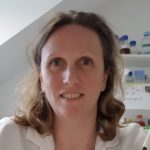Link to Pubmed [PMID] – 18818731
Link to DOI – 10.1371/journal.pgen.1000201
PLoS Genet 2008 Sep; 4(9): e1000201
Unlike most bacteria, Vibrio cholerae harbors two distinct, nonhomologous circular chromosomes (chromosome I and II). Many features of chromosome II are plasmid-like, which raised questions concerning its chromosomal nature. Plasmid replication and segregation are generally not coordinated with the bacterial cell cycle, further calling into question the mechanisms ensuring the synchronous management of chromosome I and II. Maintenance of circular replicons requires the resolution of dimers created by homologous recombination events. In Escherichia coli, chromosome dimers are resolved by the addition of a crossover at a specific site, dif, by two tyrosine recombinases, XerC and XerD. The process is coordinated with cell division through the activity of a DNA translocase, FtsK. Many E. coli plasmids also use XerCD for dimer resolution. However, the process is FtsK-independent. The two chromosomes of the V. cholerae N16961 strain carry divergent dimer resolution sites, dif1 and dif2. Here, we show that V. cholerae FtsK controls the addition of a crossover at dif1 and dif2 by a common pair of Xer recombinases. In addition, we show that specific DNA motifs dictate its orientation of translocation, the distribution of these motifs on chromosome I and chromosome II supporting the idea that FtsK translocation serves to bring together the resolution sites carried by a dimer at the time of cell division. Taken together, these results suggest that the same FtsK-dependent mechanism coordinates dimer resolution with cell division for each of the two V. cholerae chromosomes. Chromosome II dimer resolution thus stands as a bona fide chromosomal process.

